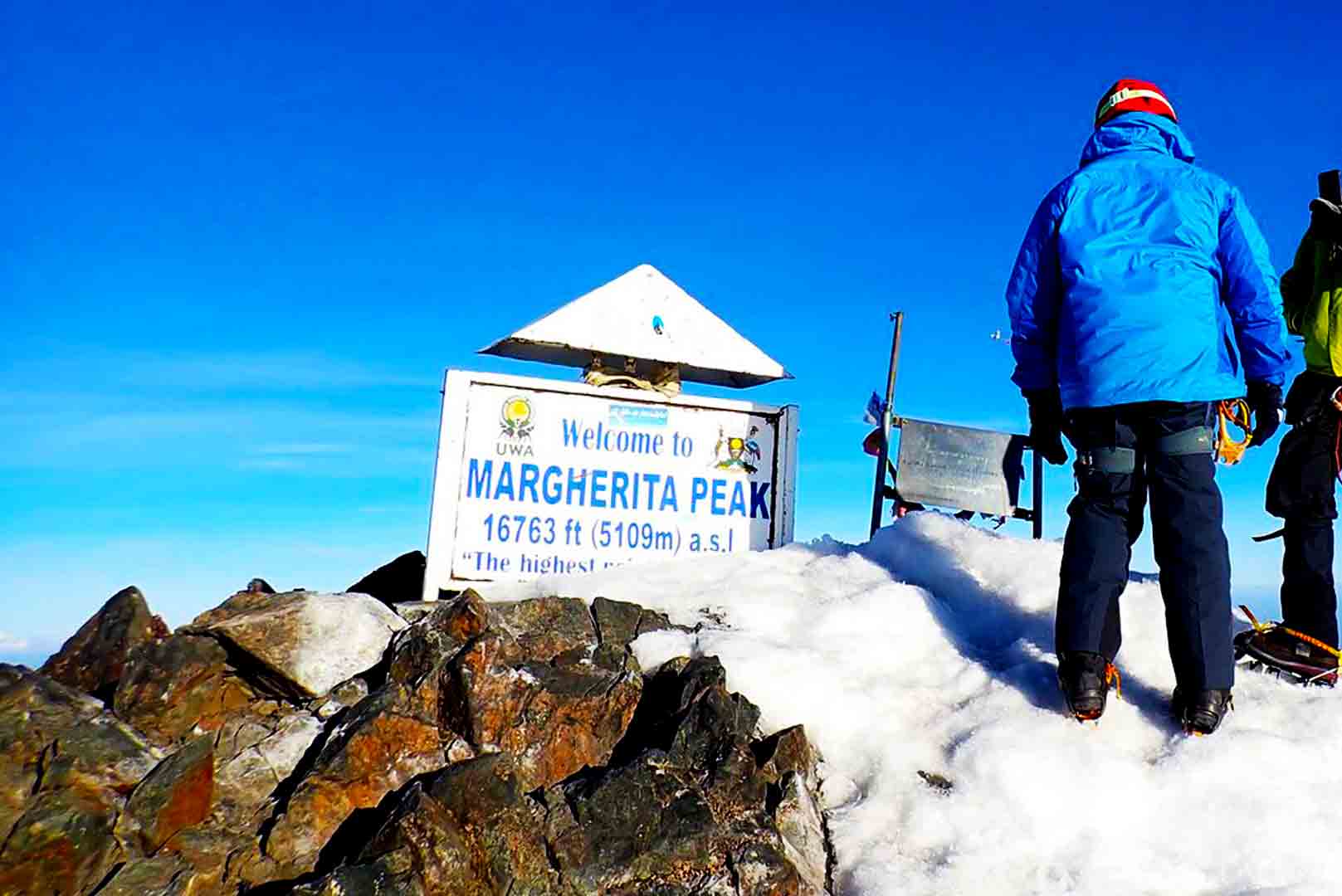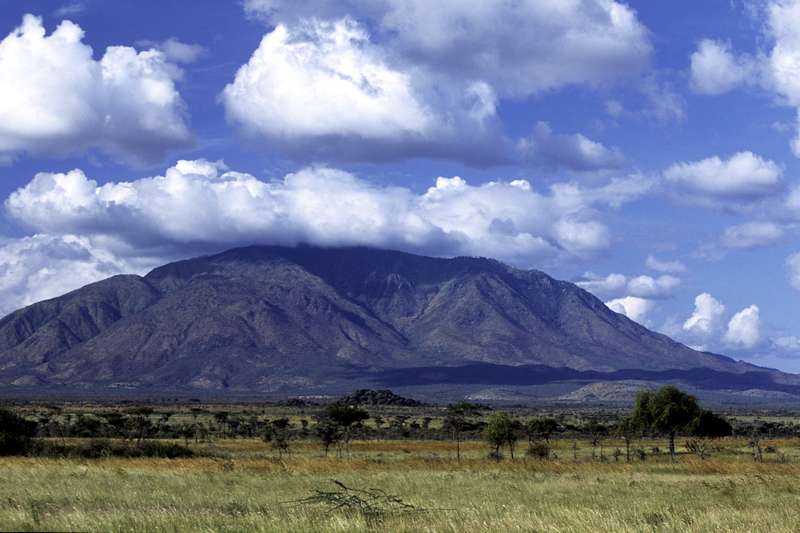Types Of Mountains in Uganda
Types Of Mountains in Uganda vary in their geological origins, elevations, and characteristics, creating a tapestry of natural wonders.
Uganda, a country known as the “Pearl of Africa,” boasts a remarkably diverse and picturesque landscape, including several types of mountains.
From the towering glacial peaks of the Rwenzori Mountains to the rugged terrain of the Moroto Mountains in the northeastern region, Uganda’s mountains offer a rich blend of geological history, cultural significance, and ecological diversity.
In this exploration, we will delve into the various types of mountains found in Uganda, shedding light on their unique features and the roles they play in shaping both the country’s physical geography and cultural heritage.

Here’s a classification of the examples of mountains in Uganda according to their formation types:
Volcanic Mountains:
Virunga Mountains: This range includes several volcanic peaks such as Mount Muhabura, Mount Gahinga, and Mount Sabyinyo, which were formed by volcanic activity.
Mount Elgon: An extinct shield volcano on the border with Kenya, characterized by its volcanic origin and crater calderas.
Fold Mountains:
Rwenzori Mountains: These mountains, also known as the “Mountains of the Moon,” were formed by the folding of the Earth’s crust and are known for their glacial peaks.
Block Mountains:
Moroto Mountains: The Moroto Mountains in northeastern Uganda are examples of block mountains, which are created when blocks of the Earth’s crust are uplifted along faults, resulting in steep, rugged terrain.
Hilly Regions:
Kigezi Highlands: While not traditional mountains, the Kigezi Highlands are a hilly and elevated region, formed through various geological processes, including erosion and tectonic activity.
Cultural and Isolated Peaks:
Mount Morungole: This mountain in the Morungole Range is a culturally significant peak and may not fit neatly into geological formation types but rather has unique cultural significance to the Karimojong people.
Uganda is a diverse and geographically varied country with several types of mountains and mountain ranges.
Here are some of the notable types of mountains in Uganda:
Virunga Mountains:
- Location: The Virunga Mountains are a volcanic mountain range located in the border region of Uganda, Rwanda, and the Democratic Republic of Congo (DRC).
- Formation: These mountains were formed by volcanic activity related to the East African Rift System. The East African Rift is a tectonic plate boundary where the African Plate is splitting into two smaller plates, leading to volcanic activity in the region.
Prominent Peaks:
- Mount Muhabura: This is one of the major peaks in the Virunga Mountains and straddles the border between Uganda and Rwanda. It is an extinct volcano characterized by its distinctive cone shape.
- Mount Gahinga: Located near Mount Muhabura, Mount Gahinga is another extinct volcano and is part of the Virunga volcanic chain.
- Mount Sabyinyo: Also adjacent to Mount Muhabura, Mount Sabyinyo is a volcano with a serrated appearance due to the erosion of its multiple peaks.
- Ecological Importance: The Virunga Mountains are renowned for their rich biodiversity, including the endangered mountain gorillas. These mountains are home to several habituated gorilla groups and are a significant conservation area.
Mount Elgon:
- Location: Mount Elgon is situated on the border between Uganda and Kenya in East Africa. It lies northeast of Lake Victoria.
- Formation: Mount Elgon is an extinct shield volcano, which means it was formed by repeated eruptions of low-viscosity basaltic lava. Over time, these eruptions built up a broad, shield-shaped mountain.
- Calderas: The mountain is characterized by several calderas, which are large volcanic craters that formed as a result of the collapse of the volcano’s summit. The largest of these calderas is known as the “Koitobos Caldera.”
- Altitude: Mount Elgon is one of the highest peaks in Uganda, with its highest point, Wagagai Peak, reaching an elevation of approximately 4,321 meters (14,177 feet) above sea level.
- Ecology: The slopes of Mount Elgon are home to a variety of ecosystems, including montane forests, bamboo zones, and moorlands. It also supports unique flora and fauna, making it an important conservation area.
Fold Mountains – Rwenzori Mountains:
- Location: The Rwenzori Mountains, often referred to as the “Mountains of the Moon,” are located in the western part of Uganda along the border with the Democratic Republic of Congo (DRC). They also extend into the DRC.
- Formation: These mountains are primarily fold mountains, which means they were formed through the folding of the Earth’s crust. The folding occurred as a result of the collision of tectonic plates in the region. Over millions of years, the compressional forces caused the Earth’s crust to fold and uplift, creating the dramatic peaks and valleys of the Rwenzori Mountains.
- Glacial Peaks: The Rwenzori Mountains are known for their distinctive glacial peaks, including Mount Stanley, which is the highest point in Uganda. The presence of glaciers on these equatorial mountains is unique and contributes to their iconic appearance.
- Biodiversity: The Rwenzori Mountains are renowned for their rich biodiversity, including many endemic species of plants and animals. The mountains are a designated UNESCO World Heritage Site and offer opportunities for trekking and exploring this unique ecosystem.
Block Mountains – Moroto Mountains:
- Location: The Moroto Mountains are situated in northeastern Uganda, specifically in the Karamoja region.
- Formation: The Moroto Mountains are an example of block mountains. Block mountains are created when blocks of the Earth’s crust are uplifted along fault lines or fractures in the Earth’s crust. In the case of the Moroto Mountains, tectonic activity and faulting in the region caused the crust to fracture and the blocks to be pushed upward, resulting in the steep and rugged terrain that characterizes these mountains.
- Terrain: The Moroto Mountains are characterized by rocky outcrops, deep valleys, and steep slopes. This terrain provides a stark contrast to the relatively flat and arid plains of the surrounding Karamoja region.
- Cultural Significance: These mountains hold cultural significance for the indigenous Karimojong people who inhabit the area. They are an integral part of the local culture and have played a role in the traditional way of life for generations.
- Scenic Beauty: Beyond their geological and cultural significance, the Moroto Mountains offer breathtaking panoramic views and unique landscapes that attract adventurers, hikers, and photographers.
Hilly Regions – Kigezi Highlands:
- Location: The Kigezi Highlands are situated in southwestern Uganda, particularly in the districts of Kabale, Rukungiri, and Kisoro.
- Formation: Unlike traditional mountains, the Kigezi Highlands are characterized as hilly regions. These hills were formed through a combination of geological processes, including tectonic activity, volcanic activity, and erosion. The region’s complex geological history has contributed to its varied topography.
- Terrain: The Kigezi Highlands are marked by rolling hills, terraced slopes, and an undulating landscape. These hills and valleys are often covered in lush vegetation, making the region a stunning and picturesque area.
- Agriculture: The fertile soils and moderate climate of the Kigezi Highlands make it one of Uganda’s most important agricultural regions. The terraced hillsides are used for the cultivation of crops such as bananas, maize, beans, and tea.
Cultural and Isolated Peaks – Mount Morungole:
- Location: Mount Morungole is located in the Morungole Range, which is part of the Kidepo Valley National Park in northeastern Uganda.
- Formation: While Mount Morungole may not fit neatly into traditional geological formation types, it is culturally significant to the indigenous Karimojong people. Its formation is a result of geological processes over millions of years, including erosion and uplift.
- Cultural Significance: Mount Morungole holds immense cultural importance for the Karimojong people. It is considered a sacred mountain and plays a central role in their spiritual beliefs and rituals. The mountain is associated with ancestral spirits, and ceremonies are conducted on its slopes.
- Unique Landscape: Mount Morungole and the Morungole Range offer a striking and unique landscape. The mountain rises abruptly from the surrounding plains, making it a prominent feature in the region. The views from its summit provide a breathtaking panorama of the surrounding landscape.


